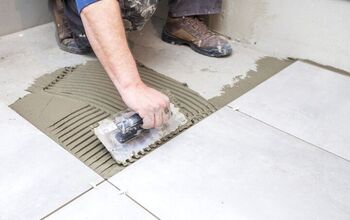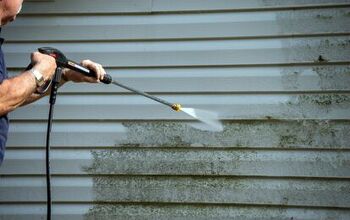How Long Does A Rice Cooker Take?

Thanks to appliances like the rice cooker, we’re able to make what used to be a frustrating process into an easy one. There are so many different rice cookers on the market; it can be hard to choose which one to buy. While they all work relatively the same, some come with unique and special features.
It takes 10 minutes to cook 1 cup of white rice in a rice cooker, and up to 20 minutes for 1 cup of brown rice. You can adjust the cooking time for every 1/2 cup of rice that you add. Set your rice cooker for 15-25 minutes if you want your rice to be soft.
One of the biggest factors when it comes to the cooking time of a rice cooker is the type of rice you’re working with. In this article, you’re going to be given detailed information to help you make perfect rice. There’s a how-to guide towards the end that will help you make the dish with ease.
Rice Cook Times
Now that you know that the type of rice plays a big role, how long will your meal take to cook? It doesn’t matter if you’re working with long, medium, or short-grain rice. It takes an average of 20 minutes per cup but can take shorter or longer.
The more “whole grain” the rice is, the longer it takes to cook. What you’ll notice in the chart below is that white rice takes a lot less time than brown rice. Jasmine and black rice will take even longer.
| Brown Rice | Time | White Rice | Time |
| One cup | 25 minutes | One cup | 10-13 minutes |
| Two cups | 35 minutes | Two cups | 20-25 minutes |
| Three cups | 50 minutes | Three cups | 30-35 minutes |
| Four cups | 60-70 minutes | Four cups | 40-45 minutes |
| Five cups | 70-75 minutes | Five cups | 50-55 minutes |
| Six cups | 75-80 minutes | Six cups | 60-65 minutes |
| Seven cups | 80-90 minutes | Seven cups | 70-75 minutes |
| Eight cups | 100-110 minutes | Eight cups | 80-85 minutes |
| Nine cups | 120-125 minutes | Nine cups | 90-95 minutes |
| Ten cups | 130-135 minutes | Ten cups | 100-105 minutes |
How to Cook Rice in a Rice Cooker
The nice thing about using a rice cooker is that the process is essentially the same for all rice types. The one thing that will change is the amount of water or broth you use. Here is how you can make a scrumptious serving of rice every time using a rice cooker.
Step One: Wash Your Rice
This first step takes quite a few people by surprise when they first hear it. You should always wash your rice to get rid of any contaminants or bad grains that might be in the mix. If you live in the United States, rice is required to be enriched with a laundry list of nutrients.
Washing the rice could remove things like iron, thiamin, folic acid, or niacin. It’s not a necessary step, but it’s a common way to start the process.
Step Two: Measure Your Water
You can use measuring cups or a scale for this step. Here’s a handy guide for the average rice ratios.
| Rice type | Water to Rice Ratio | Example |
| White short-grain rice | 1:1 ratio | 1 cup of water for every 1 cup of rice. |
| White medium-grain rice | 1.5:1 ratio | 1 ½ cups of water for every 1 cup of rice. |
| White long-grain rice | 1.5:1 ratio | 1 ½ cups of water for every 1 cup of rice. |
| Brown long-grain rice | 2.25:1 ratio | 2 ¼ cups of water for every 1 cup of rice. |
| Jasmine or basmati rice | 1.5:1 ratio | 1 ½ cups of water for every 1 cup of rice. |
| “Parboiled” rice | 2:1 ratio | 2 cups of water for every cup of rice. |
These measurements aren’t exact, but you can always find cooking instructions on the packing of the rice. If you’re just starting to use your rice cooker for the first time, it might take a few tries to see what settings work best.
Step Three: Add in Ingredients
Now that you know how much of everything you need, add everything to the rice cooker. If you like sticky rice, let this mixture sit for 30 minutes before cooking. You can also add spices like turmeric, salt, or lemon pepper during this step.
Step Four: Stir
Before we set it and forget it, we need to give everything a good stir. Take a large spoon, spatula, or ladle, and stir the pot twice. Make sure you’re pushing the grains to the sides and under the water level.
Stirring the rice for too long can make the rice stickier, so be mindful of that. If you see any floaters, get them under the water to ensure there won’t be any burnt pieces.
Step Five: Adjust Cook Time
Once you have your rice and liquid in the cooker, it’s time to choose how long it needs to cook for. The longer it cooks, the more soft and fluffy the rice will be. Some rice cookers take longer to prepare the dish than others.
Step Six: Set it and Forget It
After you’ve picked the right cooking times and everything is nicely stirred, you can go about your day. The rice cooker will do the work and automatically go into a warming mode once it’s done cooking.
Step Seven: Transfer and Enjoy
Now, take the rice out of the cooker and put it in a serving bowl. Use a wooden utensil to give it a good stir and break up any chunks. Add in butter or anything else you’d like before enjoying your delicious meal!
Things to Keep in Mind
Here are some helpful tips and tricks to keep in mind when using or shopping for a rice cooker. This can help you make the perfect rice and save money on what’s soon to be your new favorite appliance.
Basic Rice Cookers
There are basic rice cookers available that get the job done just fine. These cookers won’t have any fancy settings, and they might not even have a warming mode. Basic rice cookers are known to have a single button and tend to come at a lower price point.
Modern Rice Cookers
Newer rice cookers come with a variety of useful features. There are automatic timers, built-in steam trays, warming modes, and more. On some, you can even select what kind of rice you’re cooking, and it will do the rest.
These options tend to be more expensive, but you do get what you pay for.
Trial and Error
You read earlier that it might take some getting used to. Getting the water measurements just right and the texture of the rice can take some work. If you’re experiencing rice that’s too soft, use less water.
Don’t go and throw away mushy rice, as it can be used in a number of yummy recipes! If you’re facing the opposite problem and your rice is too firm, add in some extra water or broth.
If you’ve done that and are still facing issues, your cooker could be broken.
Lastly, I do want to mention that if you leave rice in a rice cooker for too long, it can lead to food poisoning. It’s best to avoid keeping it in there for over 12 hours after it’s been fully cooked.
Related Questions
How do you know when a rice cooker is done?
When you’re using a rice cooker just using water, the cooking time varies depending on what type of rice you’re using. As the water gets absorbed by the rice, the temperature will start to rise. As this continues, it speeds up, eventually arriving at a set point that will turn the cooker off. A rice cooker is well-known for being able to tell when the rice is done and shut itself down. It will keep the food warm for a good amount of time as well. If you want to test it for yourself, taste the rice and see if it’s tender enough for your liking.
Can I leave the house with a rice cooker on?
It depends on the rice cooker you’re working with. Most of the modern electric rice cookers have a “stay warm” feature. This will keep the rice at an optimal temperature for several hours. It’s never suggested to leave any appliance unattended for an extended period of time. If you can, power off the unit until you get back home. Because rice gets stickier the longer it stays in water, avoid starting the process until you can be there the entire time.
Does a rice cooker use a lot of electricity?
Small appliances like rice cookers tend to use very little electricity. The average rice cooker will use around 600 to 700 watts of electric power while in use. Once the machine goes into a “stay warm” mode, it’s using around 30 to 50 watts.

Kirstin is a passionate writer who loves helping people learn new things when it comes to home improvement. When she's not behind a keyboard, she enjoys DIY projects, crafts, spending time with her pets, and making videos. She hopes that with all she writes, someone is finding a solution to their home improvement needs.
More by Kirstin Harrington



























